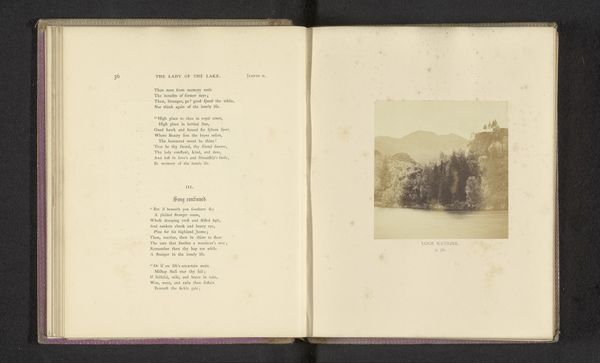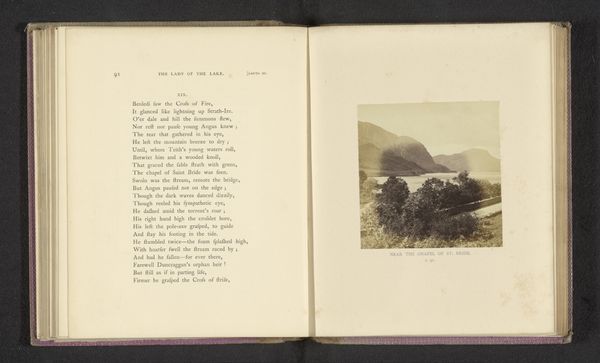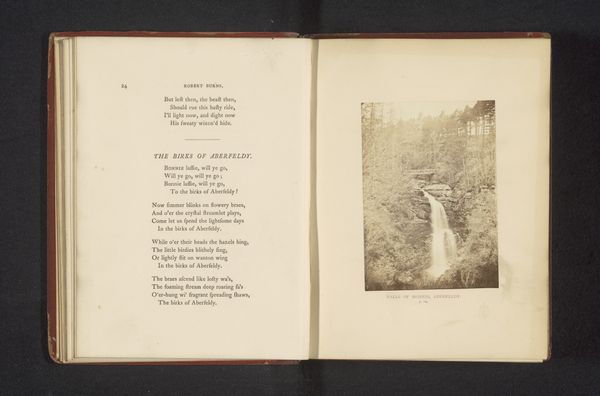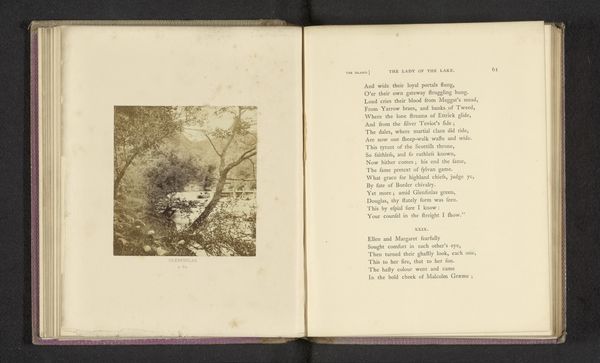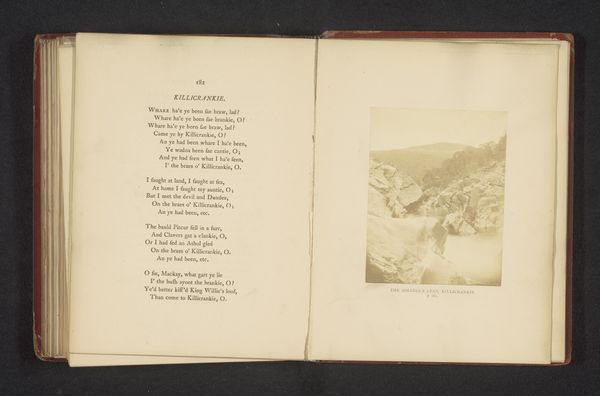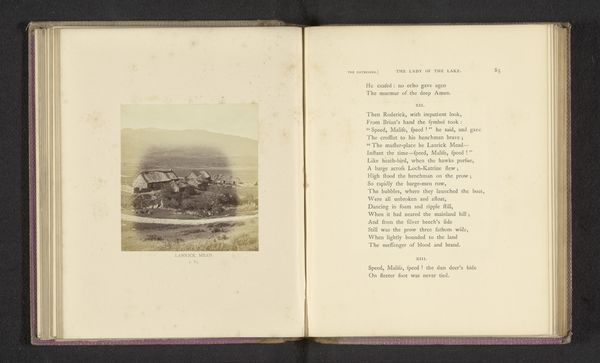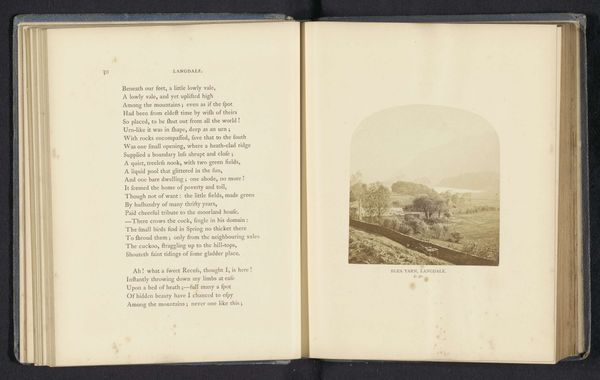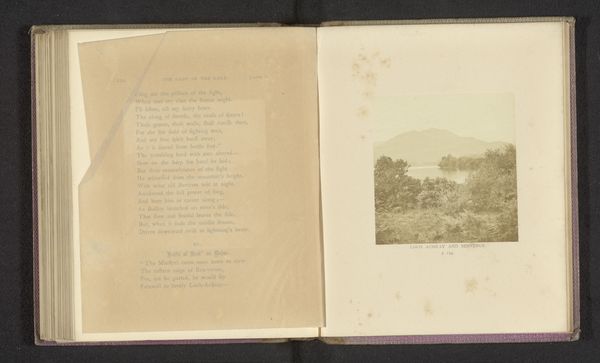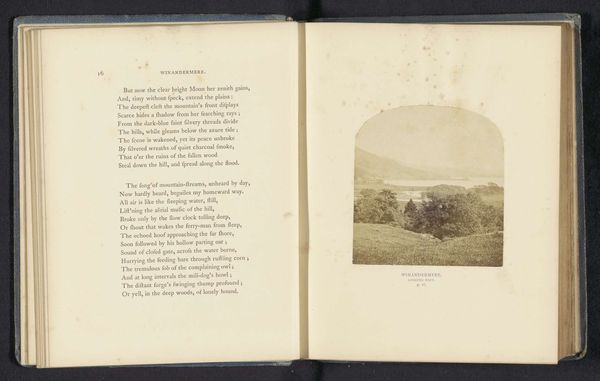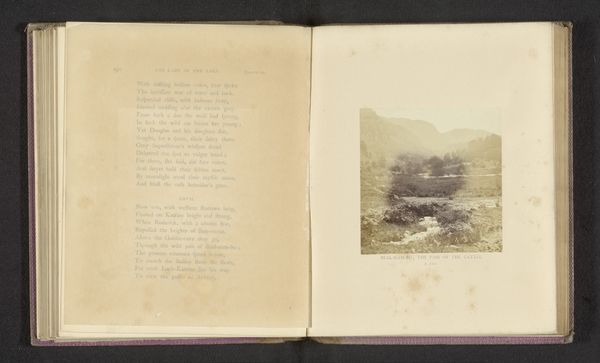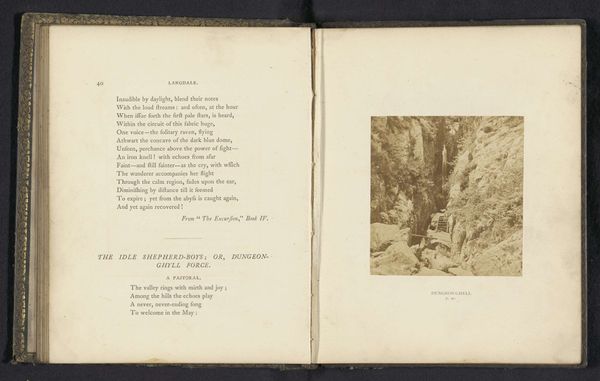
print, textile, photography
#
lake
# print
#
book
#
landscape
#
textile
#
photography
#
mountain
Dimensions: height 91 mm, width 85 mm
Copyright: Rijks Museum: Open Domain
Curator: This landscape holds a particular stillness. Gazing at this print, it’s almost meditative in its soft, sepia tones. Editor: It's a fascinating inclusion within the context of a book, especially positioned right across from the text itself. This piece, entitled "Gezicht op Ben Venue en Loch Katrine," was created before 1863, credited to Thomas Ogle. Its layered visuality comes not only from what we can consider the initial capture, but from how that information is ultimately being circulated – mediated through book culture and economies. Curator: The textures feel so vital. Look at the way the mountains meet the loch, mirroring each other, yet blurred in a way that almost abstracts them. It pulls me in. It feels intimate, despite the grand scale of nature presented. Editor: Yes, Ogle captures the sublime—a romantic ideal central to much landscape art from this period—but this capture itself operates through very specific dynamics of empire. Loch Katrine was vital as the main water source for Glasgow's expansion throughout the late 19th century, so any reading of landscape will be necessarily intertwined with an understanding of environmental concerns around labour, sanitation, and urbanisation. Curator: It makes me wonder about the labour of the image itself. The technicalities involved in this style of early photographic reproduction were likely laborious. To juxtapose a mountain with this, makes me contemplate the contrast of scales here: mountains which will be here for millennia and practices of representation so rapidly evolving. Editor: That contrast is potent, and the very materials and labour you identify underscore how these 'natural' landscapes were made, reshaped, circulated, and understood. To turn the page and return to the accompanying text gives me the space to think of these layered palimpsests simultaneously. What possibilities could be held if the circulation of landscape images fostered new ecological consciousness rather than capital accumulation? Curator: Yes, well, I know that it’s made me eager to actually visit this place and connect more deeply to the physical setting that has inspired Ogle. Editor: Perhaps future trips may be mindful of historical erasures and labour inherent in our visual imaginaries of landscape.
Comments
No comments
Be the first to comment and join the conversation on the ultimate creative platform.
